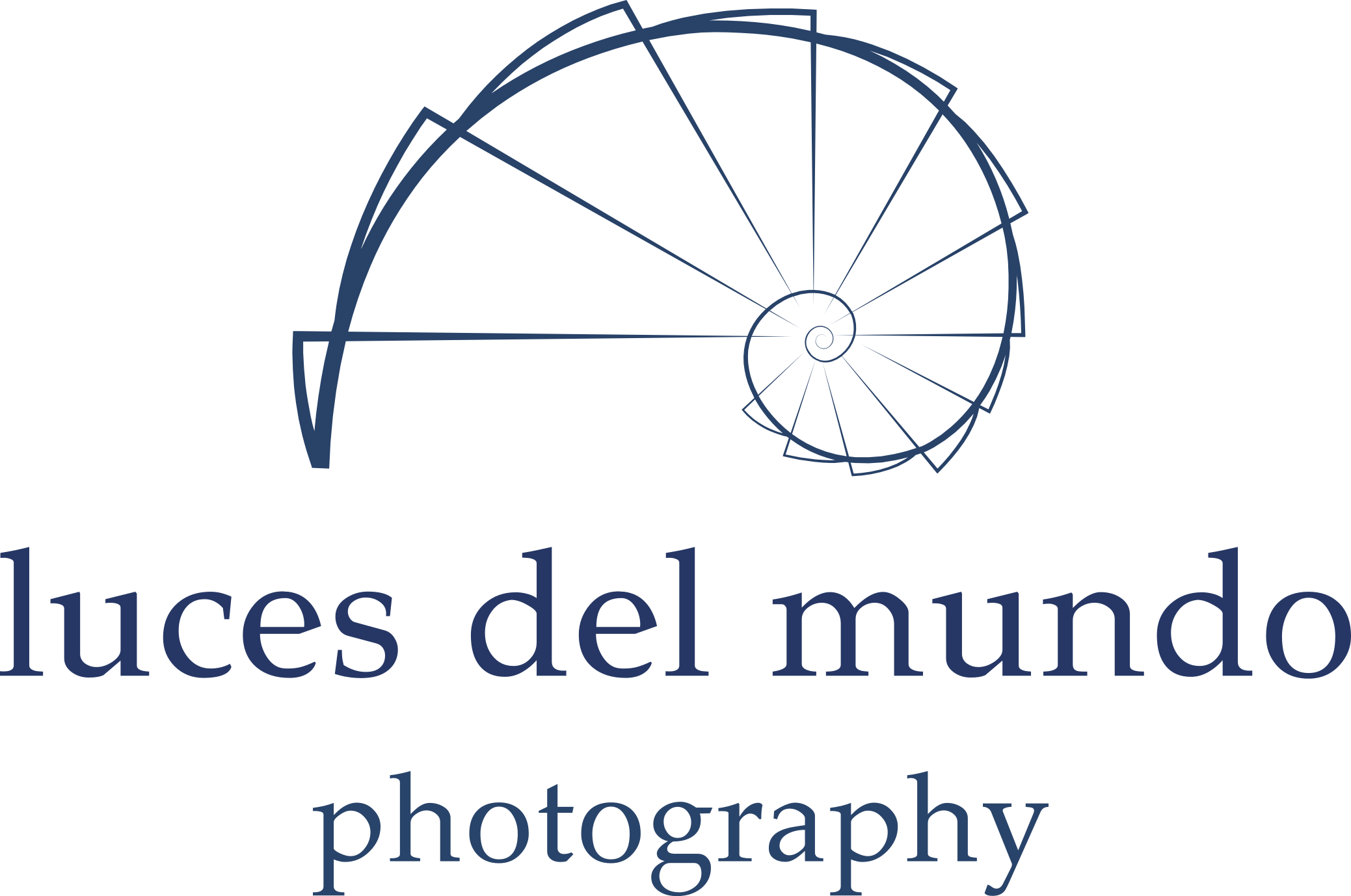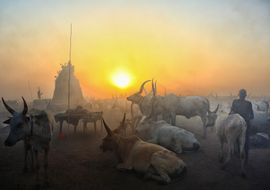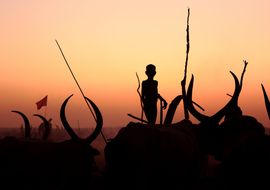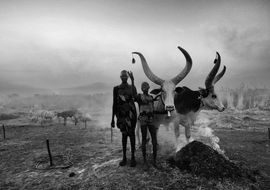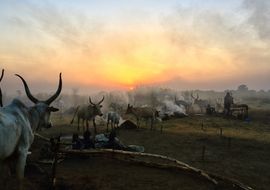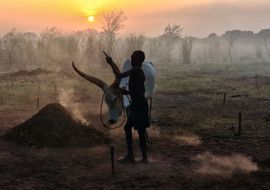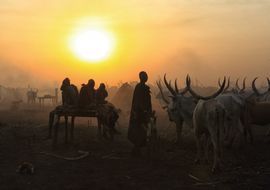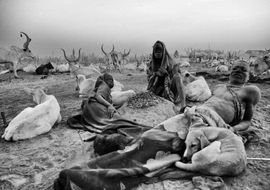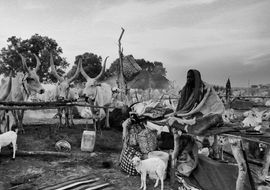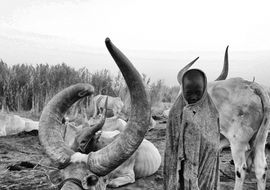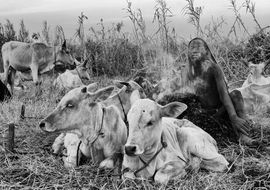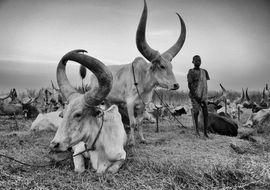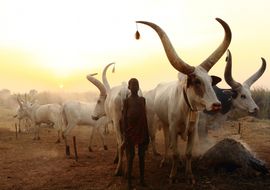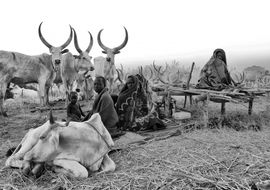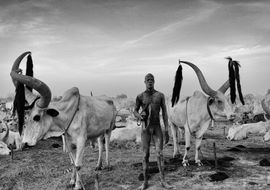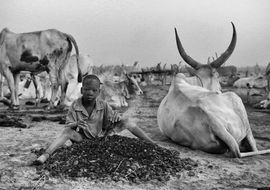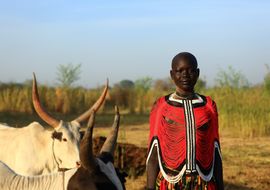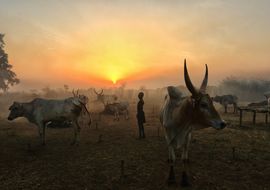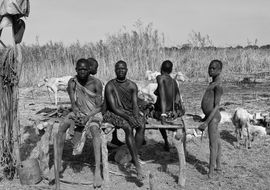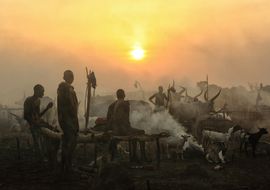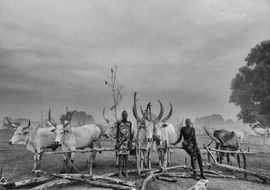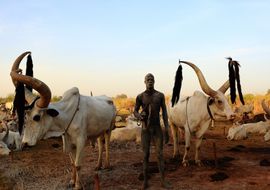
Dawn in the Cattle Camp of Terekeka, on the banks of the enigmatic White Nile, the fog is suspended over the waters of the river, illuminated by the first soft lights of the cold morning. Steaming bonfires announce us where we are ...
Hundreds of Ankole cows receive us upon entering the camp. Among them, in the heat of the fires, appear the younger Mundari, covered with ash to protect themselves from insects. The elderly rest in small wooden stilt houses that serve as a bed and pantry. The barking of the dogs that sleep in the shelter of the small fires announce our arrival.
The youngest, after washing their heads with the urine of their cows, which serves to prevent infections, are the first to begin with daily work. Stimulating with its mouth the sex of the cow to later milk them.
Meanwhile, the older ones smear their bodies with the peach colored ash obtained from the burning of dung, later they spread ash on the skin and the big curved horns of their cattle, while they sing to them, becoming an intimate moment between the man and the animal. The ash is used as a natural antiseptic and insect repellent also protecting them from the sun.
For thousands of years, the Mundari live in community, sharing everything, their blankets, instruments and collaborating in daily work.
When they are initiated, they take charge of their favorite cow, which is their most precious possession and a reflection of themselves.
The initiation of the young people happens around the time of the harvest, the boys gather to sing songs of their clans, their heads have already been shaved, the initiator calls each one saying aloud the names of their ancestors for later, with a sharp knife, make the V marks on his forehead, these scars mean that he is a man who can get married and given his cow. Depending on the colors, size and shape of the cow's horns its value varies. To give greater prestige and beauty the Mundari are giving shape and adorning the horns of their cowes.
It is time to move the camp, the sun heats up, drums and trumpets sound, the cattle begin to rise, the children unleash the cows from the stakes and with an impeccable organization they move the great camp towards the banks of the Nile River .
A young Mundari, who leads the expedition, has a small calf tied to his body, his cow is left behind with the rest of the cows. The Mundari enters the river and from the shore calls his cow, it goes to meet him carrying the rest of the cattle. Starting to cross with great effort to the other shore in search of new pastures.
The spectacle is incredible, hundreds of cows crossing all day long to the different islands, sometimes the smaller calves return to the shore and are returned to the water to continue with the crossing.
Once everyone has crossed to the other shore and after the cattle graze all day, the camp is reassembled. The elders tie the cows while the smaller ones pile the droppings in circles to light the fires.
The Mundari rest and comment on the day while drinking milk, the young marriages heat the urine of the cows they use to dye their hair along with the orange ash from the fires in the sun.
The aesthetics of the Mundari people have changed. Before the Islamic influence that introduced the chilaba, they were naked and used a corset called "Manual". Today under the chilaba they wear small belts made of colored beads, reminiscent of the old corsets.
Married women still wear small sheepskin skirts, in ceremonies they rub their body with a mixture of grease and reddish earth, creating reflections of great beauty on their skin.
The sun begins to fall in the Cattle Camp of Terekeka. The children light the numerous bonfires, the cattle gather around the fire, the clay pots begin to boil, the sun is hidden on the horizon, leaving the last rays in the waters of the White Nile. The sky is tinged with red and orange tones, among the intense smoke of the ashes shadows appear next to the silhouettes of the large curved horns. Night falls, creating a magical atmosphere that will remain in my memories.
